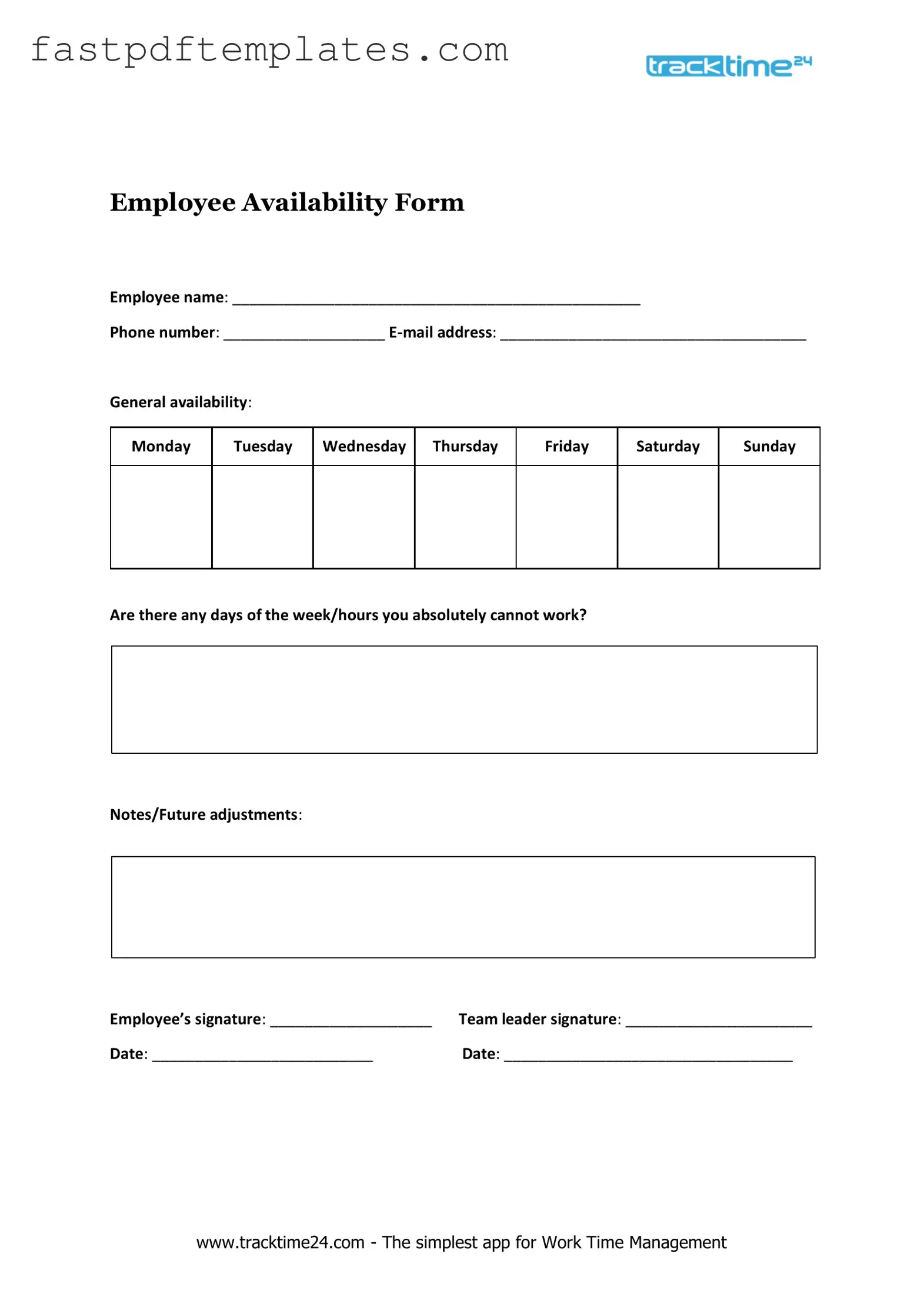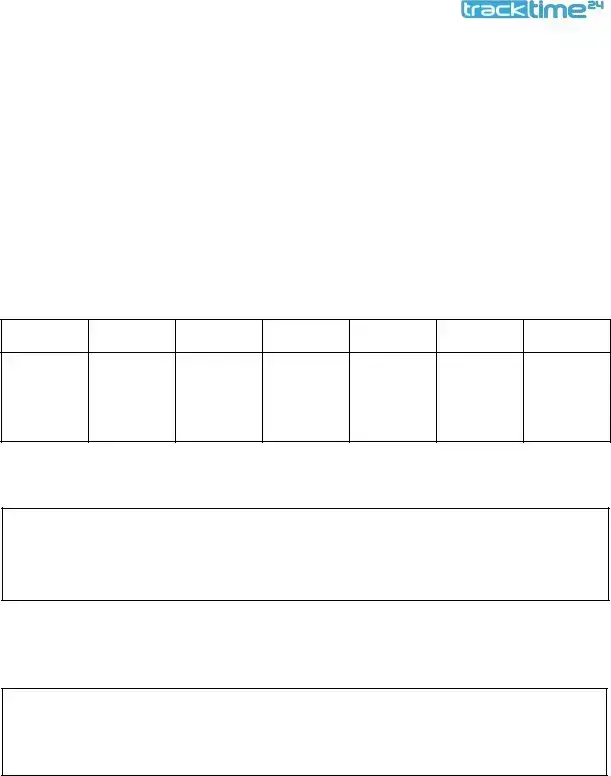The Employee Availability form shares similarities with the Job Application form. Both documents require individuals to provide personal information, including contact details and work history. The Job Application form focuses on the applicant's qualifications and skills, while the Employee Availability form emphasizes the times and days the employee is available to work. This information helps employers match candidates with suitable job openings based on their availability.
Another document that resembles the Employee Availability form is the Time-Off Request form. Employees use this form to request specific days off, detailing the dates and reasons for their absence. Like the Employee Availability form, it requires clear communication regarding the employee's schedule. Both documents ensure that the employer can manage staffing needs effectively while accommodating employee requests.
The Shift Preference form is also similar to the Employee Availability form. Employees fill out this document to indicate their preferred shifts or work hours. It allows employers to understand which shifts are most desirable for their staff. Both forms aim to create a work schedule that meets the needs of the business while considering the preferences of employees.
The Leave of Absence Request form parallels the Employee Availability form in that it addresses an employee's time away from work. This form outlines the duration and reason for the leave, which can impact the employee's availability. Both documents require thoughtful planning to ensure that the employer can maintain operations while respecting the employee's circumstances.
Additionally, the Work Schedule Agreement is akin to the Employee Availability form. This document outlines the agreed-upon work hours between the employer and employee. It ensures that both parties have a mutual understanding of the employee's schedule, similar to how the availability form communicates when an employee can work.
The Employee Schedule Change Request form is another document that shares similarities. Employees submit this form to request changes to their previously established work schedule. Like the Employee Availability form, it requires clear communication about availability and scheduling needs, allowing employers to accommodate changes while maintaining workflow.
The Overtime Request form also resembles the Employee Availability form in that it deals with an employee's working hours. This form is used when an employee seeks approval to work beyond their standard hours. Both documents highlight the importance of communication regarding work schedules and ensure that employers can manage labor costs effectively.
Lastly, the Onboarding Schedule form is similar in that it outlines the training and orientation schedule for new employees. It details when new hires will be available for training sessions, just as the Employee Availability form specifies when current employees can work. Both documents are essential for organizing schedules and ensuring that employees are prepared for their roles.

